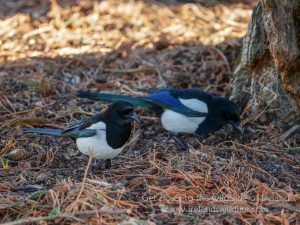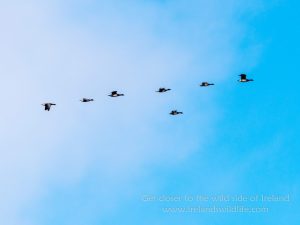 Ever the innovators, Panasonic has just introduced two new cameras to its flagship Lumix G line of mirrorless compact system cameras (CSC). You may recall I tested the top-end Lumix GH5 in the third quarter of 2017, and was very impressed with the camera… so when I received an invitation to a Photo Walk in Dublin for a hands-on look at the brand new Lumix G9 and Lumix GH5S earlier this month I jumped at the chance.
Ever the innovators, Panasonic has just introduced two new cameras to its flagship Lumix G line of mirrorless compact system cameras (CSC). You may recall I tested the top-end Lumix GH5 in the third quarter of 2017, and was very impressed with the camera… so when I received an invitation to a Photo Walk in Dublin for a hands-on look at the brand new Lumix G9 and Lumix GH5S earlier this month I jumped at the chance.
Why two new Lumix cameras?
While the Lumix G series of CSCs has always been a very capable platform for both stills photographers and videographers, there was a general perception, particularly at the upper end of the range, that the cameras catered more to those shooting video.
The Lumix G9 changes that — designed first and foremost with stills photographers in mind, it’s very much a stills camera that also has great video capability, as opposed to the GH5, which is viewed more as a video camera that also takes great stills.
But what about the new GH5S? This is a very different beast — boasting a new 10MP micro 4/3 sensor (that’s half the resolution of its siblings — but with technical wizardry that gives it two different native ISO settings — which basically means low noise/gain shooting at very low light levels. Geared very much towards low-light video the GH5S will also appeal to stills photographers who routinely shoot in low light, and who don’t need super high-res images.
Hands on with the new Lumix G9

Announced in December 2017 and available from January 2018 the Lumix G9 marks a significant shift at the top of the Lumix line. The GH5, while a very capable stills camera, was (and still is) pitched very much as a hybrid camera, with the emphasis skewed firmly towards 4K video.
The G9 is at the other end of the spectrum. This is a stills photographers camera in every way, that also happens to offer a pretty nifty set of video features. Everything from the redesign of the grip to the placement of the controls to the addition of an LCD status panel on the top-plate is a testament to Panasonic’s commitment to addressing the needs of the stills photographer.
The Panasonic marketeers labelled the G9 the “Ultimate Outdoor and Wildlife Camera” at launch — that’s quite a claim… so I was intrigued to get some hands-on time with the camera in the attractive surroundings of Glasnevin’s National Botanic Gardens in Dublin to see how it stacked up.

It stacks up very well indeed… especially when paired with the exquisite new Leica DG 200mm f2.8 and bundled 1.4x teleconverter (equivalent to 400mm f2.8 or a 560mm f4 with the converter in 35mm terms), and the superb Leica DG 100-400mm zoom I tested alongside the GH5 last year. As with any new camera system, there was a bit of “getting used” to the position of controls, and fumbling around the menus to set things up… but once you start shooting with the camera that fades away.
The G9 is blisteringly fast… autofocus, continuous shooting, focus tracking are all exceptional, even on a comparatively dull day in Dublin. I did experience a few issues with getting the autofocus to lock on the intended subject at times and flagged it with the Lumix team who were at the event. It turned out to be a combination of the autofocus setup (like everything else on the G9 it’s highly configurable) and the fact that both the sample camera and lens I was using turned out to be running pre-production firmware… and the Lumix team assured me the issues I experienced have been ironed out of production models.

The Electronic Viewfinder (EVF) on the GH5 was the best I’d ever seen… the G9 improves on it again, offering a larger view, and faster refresh rate so that there’s no annoying flicker or skipping even when tracking moving subjects. It really is excellent… and while it still takes an adjustment when moving from the optical viewfinder of a DSLR, being able to preview the effects of altering exposure in real time through the viewfinder is a real boon.
The other thing that really impressed me was the image quality. The G8 sports the same 20MP micro four-thirds sensor as the GH5, but the images seem cleaner, with less noise, particularly at higher ISO, and colours, while vibrant, are natural and well balanced.
Conclusion
Overall it was a pleasure to carry and use the G9 and Leica DG 200mm f2.8 around the National Botanic Gardens… and shooting handheld with the equivalent of a 560mm f4 was an absolute breeze. Lugging the equivalent 35mm setup around, and trying to hold it for handheld shots for any length of time, would have been demanding to say the least.
The Lumix G9’s blistering performance, comparatively low bulk and superlative image stabilisation make it a fantastic choice as a walkabout wildlife camera. Spending a short amount of time with it makes me want to see more of it and I’m looking forward to getting hold of a review sample so I can really put it through its paces out on Ireland’s wild south coast.
Meanwhile, here’s a gallery of sample of shots from my brief jaunt around Glasnevin.

























1 comment